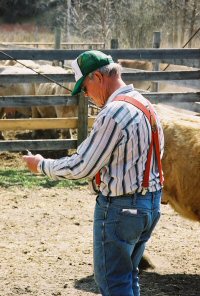


Making Changes > Reaching Older Adults
 Communicating Effectively with Older Adults
Communicating Effectively with Older Adults
The older adult population (55+) is a very diverse group. You won’t be able to reach all older adults with a single program or message.
Distance, weekly newspapers (instead of daily) and lack of Internet access can make it hard to reach people in rural and remote areas.
However, some factors are key in effective communication with and marketing to older adults.
Something as simple as the name you give to a program can determine its success or failure.
For example a program called “Seniorcize” will not be attractive to most older adult men and anyone under the age of 75 because it combines two words that may be barriers — “senior” and “exercise.”
Are you sending the right message to attract the older adults in your community?
The Alberta Centre for Active Living conducted focus groups with older adults in rural communities. Below is some information about effective communication from our Focus Group Report.
Rural Route to Active Aging Focus Group Report: What We Heard in Rural Alberta
How Older Adults in Rural Areas Get Information About Physical Activity
-
The most commonly identified sources of information were newspapers or other local papers/newsletters.
-
Participants also identified the following sources: word of mouth, local organizations and meetings/gatherings, TV, radio and books.
Design and Content Preferences
-
Show pictures of real people, not cartoon caricatures of funny old people. (Even better, include (with permission) pictures of people who actually live in the community.)
-
Many participants expressed interest in a resource that presented information on specific physical activities they could try in their local area as well as on the proper way to complete them.
-
Promote your program with regular articles in the local newspaper.
-
Produce a guide of programs or opportunities specifically for older adults in the local community.
Preferred Way to Receive Physical Activity Information (Print, in Person, Computer)?
-
Print: Many participants preferred to receive physical activity information from local newspapers, flyers, bulletin boards, etc.
-
In-Person Contact: Several participants suggested public presentations or using existing local organizations to make these presentations. Participants preferred “experts” or professionals to make presentations in their community.
Participants suggested encouraging local doctors and other health professionals to offer information about physical activity, what older adults can do and where they can go to be active safely.
-
Computers: Although some participants saw electronic communication as a useful medium, others were concerned that older adults might not be able to access or know how to use this medium.
For more information about what we heard from rural older adults, read the Alberta Centre for Active Living’s Rural Route to Active Aging Focus Group Report: What We Heard in Rural Alberta.
Find out More
Here are some other resources that can help you communicate more effectively and market your program or opportunity to the right audience.
-
Age-Friendly Communication: Facts, Tips and Ideas (Division of Aging and Seniors, Public Healthy Agency of Canada): This publication shares what has been learned through research and practical experience about communicating with seniors.
-
Focus on Healthy Messages: How to Attract Today’s Older Adult (ICAA, Journal of Active Aging): This article discusses ways for you to help people prevent, manage and slow disease progression through “health-based marketing.”
-
Older Adults: Key Messages (Centers for Disease Control): Key messages about the benefits of physical activity for older adults.
Making the Case > Reaching Older Adult > Content